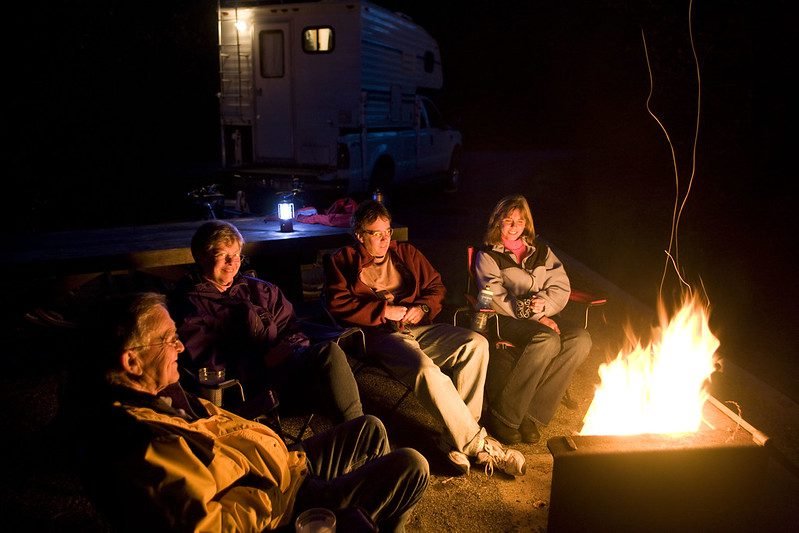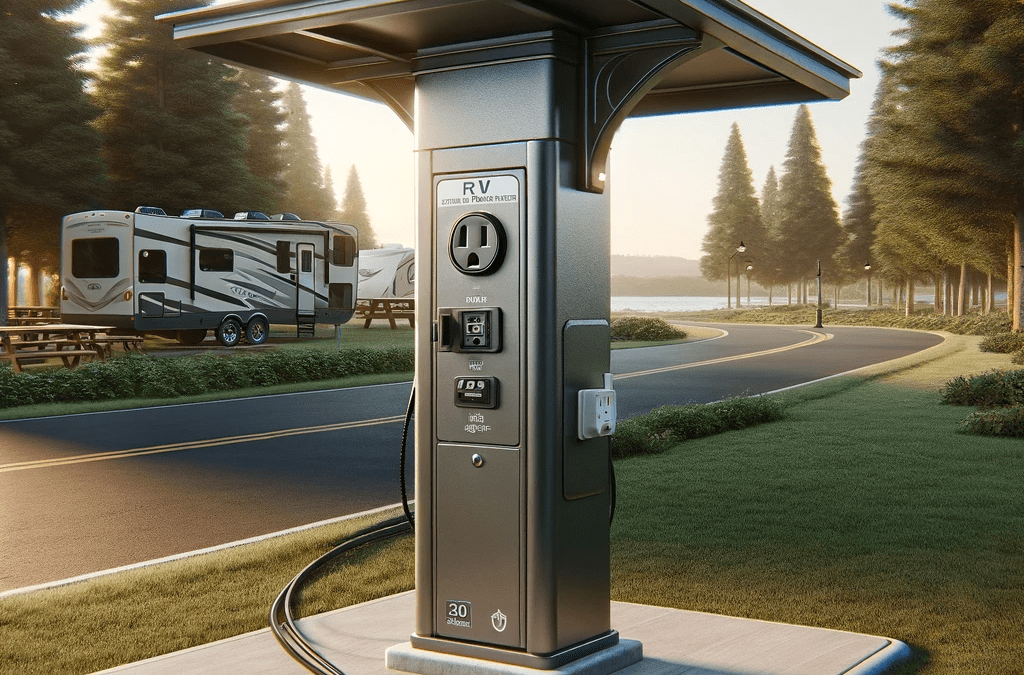Understanding the Basics
Before you charge headfirst into troubleshooting, let’s crack the RV power code. Most rigs have two distinct electrical systems: a 12-volt “brain” powering your lights, water pump, and other low-wattage heroes, and a 110-volt “muscle” system tackling your AC, microwave, and other electrical heavyweights. Think of it like a city – the 12-volt keeps the streetlights on and the water flowing, while the 110-volt energizes the skyscrapers and appliances.
Knowing this basic layout is key. Grab your RV’s manual (the electrical section, specifically) and become familiar with your own internal power grid. Remember, when dealing with electricity, safety reigns supreme. If things get murky, don’t hesitate to call in an electrician – it’s better to be safe than sorry (and avoid any campground fireworks you haven’t planned!).
Connecting to Shore Power
When connecting your RV to shore power, it’s crucial to use the correct cables and connectors. Ensure your hookup cable is rated higher than the maximum current expected from the supply for the given voltage. For instance, in the US, the current can be as high as 30 amps at 110v. A 50 amp power supply would need a 4 core cable. Be mindful of the connectors at each end of your cable, and ensure compatibility with your van’s hookup box. In some cases, adaptors may be necessary, especially when the site’s pedestals have different sockets for each ampere type.
Learn more about selecting the right cables and connectors for shore power at Good Sam Blog.
Managing Your RV’s Electrical Load
Understanding and managing your RV’s electrical load is essential. For instance, a 30 Amp RV receptacle provides about 3,600 watts of power, while a 50 Amp RV receptacle can deliver up to 12,000 watts. This huge difference in available power highlights the importance of knowing the capabilities of your RV’s electrical system and the shore power source you’re connecting to. Some RVs come with an Electrical Management System (EMS) that automatically manages power loads, but it’s still crucial to be aware of your power usage to avoid tripping breakers or damaging your RV’s electrical system.
For insights into managing your RV’s electrical load, visit Outdoorsy’s Guide to RV Electricity Basics.
The Campground Culprit: Unmasking the Power Pedestal

Before pointing fingers at your RV’s internal wiring, it’s essential to investigate the campground’s power pedestal. Here’s a revised approach with hyperlinks for further reading:
Breaker Bonanza: First, check the breaker on the pedestal serving your specific outlet. If it trips the moment you switch it, your RV might be drawing more power than the breaker can handle. This situation calls for checking your campsite’s amp limit and adjusting your power demands. Remember, tripped breakers are often signs that the corresponding circuit has been overloaded.
For a deeper understanding of troubleshooting circuit breakers, consider reading the Camping World Blog.
Surge Protector Savvy: Your surge protector is crucial for safeguarding your RV’s electrical system. If it’s tripped, it might indicate issues within the pedestal or the protector itself. Resetting it carefully to see if the power returns is a good step. If issues persist, both the pedestal and your surge protector require further examination.
For detailed guidance on surge protector troubleshooting, including checking connections and error codes, you can refer to RV Side.
Outlet Explorer: Test other outlets on the pedestal with an adapter or electrical test kit, as a faulty outlet can often be the root of the problem. Begin with lower amp outlets before moving to higher ones to ensure safety and thoroughness in your investigation.
By following these steps, you’ll be better equipped to determine if the problem lies within the campground’s electrical system or your RV. This knowledge is crucial for effective troubleshooting and confidently tackling the next stage of resolving your RV’s electrical issues.
The Internal Glitch: When Your RV Plays Possum
 Once you’ve established that the campground’s power pedestal is functioning correctly, it’s time to focus on potential issues within your RV’s electrical system. Here’s a structured approach for identifying and resolving these issues:
Once you’ve established that the campground’s power pedestal is functioning correctly, it’s time to focus on potential issues within your RV’s electrical system. Here’s a structured approach for identifying and resolving these issues:
System Sleuthing: Start by assessing the overall behavior of your RV’s electrical components. If the 12-volt system (responsible for powering lights, water pumps, etc.) is operational but you’re encountering issues with the 110-volt system (which powers appliances like AC and microwaves), the problem might lie in your shore power circuit. Understanding the different aspects of your RV’s electrical system, including the role of amps, volts, and watts, is crucial. For instance, overloading a circuit with too many appliances can trip a breaker, indicating that the combined wattage exceeds your RV’s power capacity (Camper Guide).
Outlet Odyssey: Test various outlets in your RV with a basic tool like a phone charger. If certain outlets are non-functional, this might indicate a localized issue such as a tripped circuit breaker or a problem with the GFCI outlets. Remember, the GFCI outlets are designed to trip as a safety measure when a fault is detected. Resetting these outlets can sometimes resolve the issue. It’s also important to know your RV’s circuitry to understand which outlets and appliances are connected to specific breakers (Camping World Blog).
Generator & Inverter Interrogation: If your backup power systems like generators and inverters appear to be working but there’s still no power, consider checking the connections and functionality of your power cord and transfer switch. Problems with these components can disrupt the entire electrical system. In some cases, the issue might be more complex, such as a malfunctioning converter or inverter, which would require further testing or professional assistance (Camping World Blog).
In conclusion, troubleshooting your RV’s electrical system requires patience and a systematic approach. If you’re unable to resolve the issue or if it involves complex components like converters, inverters, or the RV’s electrical wiring, it’s advisable to consult a professional technician. They can provide a more thorough inspection and ensure that repairs are conducted safely and effectively.
For more detailed guides and tips on troubleshooting RV electrical systems, you can explore these resources:
-
- Camper Guide’s “Troubleshooting RV Electrical Problems”: This resource provides an in-depth look at the various electrical systems within an RV. It covers the basics of the 12-volt and 120-volt systems, understanding amps, volts, and watts, and differentiates between minor and major electrical problems. It also offers safety warnings and general information about RV electrical systems. The guide is quite helpful for RV owners looking to understand and troubleshoot common electrical issues. For more detailed information, you can visit their page directly here.
-
- Camping World Blog’s “Troubleshooting RV Electrical Systems”: This guide focuses on understanding the basics of AC and DC power in RVs and provides tips for troubleshooting common electrical
issues. It covers topics like understanding 30 Amp vs 50 Amp RV power, troubleshooting circuit breakers, electrical outlets, RV converters, and inverters, as well as RV batteries. The guide emphasizes safety and recommends professional assistance for complex issues. For a comprehensive overview of RV electrical system troubleshooting, you can access their guide here.
- Camping World Blog’s “Troubleshooting RV Electrical Systems”: This guide focuses on understanding the basics of AC and DC power in RVs and provides tips for troubleshooting common electrical

Image by Forest Service Alaska Region via flickr
From Power Outages to Campfire Tales:
Years of roaming the open road have taught us one undeniable truth: RV electrical issues, while daunting, are often solvable with a bit of know-how and patience. Tripped breakers, problematic surge protectors, and even the intimidating faulty transfer switch are all part of the journey. Remember, the simplest solutions are often the most effective.
In the face of electrical issues, it’s natural to feel overwhelmed. Imagine the disappointment of uncooked meals and dim campfires. However, a calm and systematic approach can often unveil straightforward solutions like resetting a tripped breaker, cleaning a dusty surge protector, or securing a loose connection. These steps might seem basic, but they are fundamental in resolving many common RV electrical issues.
Approach troubleshooting as a detective would approach a mystery: each step brings you closer to solving the problem. Get hands-on, test your outlets, examine your breakers, and refer to your RV’s manual for guidance. Remember, there’s no shame in seeking professional help if the problem is beyond your expertise. Consulting a professional electrician is not admitting defeat; it’s ensuring the safety and functionality of your RV.
RV electrical challenges are part and parcel of the adventure. With a composed mindset and the right information, you can turn these challenges into stories of resourcefulness and triumph around the campfire. Keep your approach simple, enjoy the journey, and let resources like BoondockorBust.com be your guide in navigating the world of RV electrical systems. Embrace the adventure and light up your campground experiences with confidence and skill!
Resources
-
- “Where You Make It” provides a detailed guide on RV electrical systems, including insights on power alternatives like generators and solar power. Their comprehensive approach can be found at Where You Make It.
- “RVshare” offers a basic overview of RV electrical systems, focusing on solar power solutions and maintenance tips. This is a great resource for understanding the essentials of RV electrical setups, available at RVshare.
- “Boondock or Bust” provides a quick and comprehensive guide for campers, discussing shore power, generators, solar panels, and alternators. It also covers inverters, converters, and maintenance tips. Find this guide at Boondock or Bust.
- “RV Into Retirement” offers a comprehensive guide on RV electrical systems, detailing the components of both 12-volt DC and 120-volt AC systems. It includes helpful diagrams for better visualization and safety precautions. Check out this resource at RV Into Retirement.

